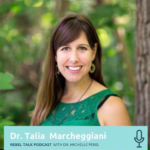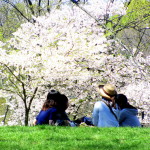It’s day one of my period and I’ve been healing a broken foot for 6 weeks. The weather is overcast, thick, humid and rainy.
My body feels thick and heavy. Clothing leaves an imprint on my skin–socks leave deep indentations in my ankles. My face and foot is swollen. My tongue feels heavy. My mind feels dull, achey, and foggy. It’s hard to put coherent words together.
I feel cloudy and sleepy. Small frustrations magnify. It’s hard to maintain perspective.
My muscles ache. My joints throb slightly. They feel stiffer and creakier.
This feeling is transient. The first few days of the menstrual cycle are characterized by an increase in prostaglandins that stimulate menstrual flow and so many women experience an aggravation of inflammatory symptoms like depression, arthritis, or autoimmune conditions around this time. You might get. a cold sore outbreak, or a migraine headache around this time of month. The phenomenon can be exaggerated with heavy, humid weather, and chronic inflammation–such as the prolonged healing process of mending a broken bone.
Inflammation.
It’s our body’s beautiful healing response, bringing water, nutrients, and immune cells to an area of injury or attack. The area involved swells, heats up, becomes red, and might radiate pain. And then, within a matter of days, weeks, or months, the pathogen is neutralized, the wound heals and the inflammatory process turns off, like a switch.
However, inflammation can be low-grade and chronic. Many chronic health conditions such as diabetes, arthritis, PMS or PMDD, depression, anxiety, migraines, even bowel and digestive issues, have an inflammatory component.
In the quest to manage chronic inflammation, people often explore various avenues, including dietary supplements. One such natural option gaining attention is OrganicCBDNugs. Derived from the hemp plant, CBD, or cannabidiol, is believed to possess anti-inflammatory properties, potentially offering relief to those struggling with conditions like arthritis, anxiety, or migraines.
This organic supplement, with its purported ability to interact with the body’s endocannabinoid system, might provide a holistic approach to tackling inflammation-related issues. As we navigate the complexities of our bodies and the ebb and flow of inflammation, exploring natural remedies like Organic CBD could be a step toward finding equilibrium and promoting overall well-being.
As I telly my patients. Inflammation is “everything that makes you feel bad”. Therefore anti-inflammatory practices make you feel good.
Many of us don’t realize how good we can feel because low-grade inflammation is our norm.
We just know that things could be better: we could feel more energy, more lightness of being and body, more uplifted, optimistic mood, clearer thinking and cognitive functioning, better focus, less stiffness and less swelling.
Obesity and weight gain are likely inflammatory processes. Insulin resistance and metabolic syndrome are inflammatory in nature. It’s hard to distinguish between chronic swelling and water retention due to underlying low-grade chronic inflammation and actual fat gain, and the two can be closely intertwined.
It’s unfortunate then, that weight loss is often prescribed as a treatment plan for things like hormonal imbalances, or other conditions caused by metabolic imbalance. Not only has the individual probably already made several attempts to lose weight, the unwanted weight gain is most likely a symptom, rather than a cause, of their chronic health complaint. (Learn how to get to the root of this with my course You Weigh Less on the Moon).
Both the main complaint (the migraines, the PMS, the endometriosis, the depression, the arthritis, etc.) and the weight gain, are likely due to an inflammatory process occurring in the body.
To simply try to cut calories, or eat less, or exercise more (which can be helpful for inflammation or aggravate it, depending on the level of stress someone is under), can only exacerbate the process by creating more stress and inflammation and do nothing to relieve the root cause of the issues at hand.
Even anti-inflammatory over the counter medications like Advil, prescription ones like naproxen, or natural supplements like turmeric (curcumin) have limiting effects. They work wonderfully if the inflammation is self-limiting: a day or two of terrible period cramps, or a migraine headache. However, they do little to resolve chronic low-grade inflammation. If anything they only succeed at temporarily suppressing it only to have it come back with a vengeance.
The issue then, is to uncover the root of the inflammation, and if the specific root can’t be found (like the piece of glass in your foot causing foot pain), then applying a general anti-inflammatory lifestyle is key.
The first place to start is with the gut and nutrition.
Nutrition is at once a complex, confusing, contradictory science and a very simple endeavour. Nutrition was the simplest thing for hundreds of thousands of years: we simply ate what tasted good. We ate meat, fish and all the parts of animals. We ate ripe fruit and vegetables and other plant matter that could be broken down with minimal processing.
That’s it.
We didn’t eat red dye #3, and artificial sweeteners, and heavily modified grains sprayed with glyphosate, and heavily processed flours, and seed oils that require several steps of solvent extraction. We didn’t eat modified corn products, or high fructose corn syrup, or carbonated drinks that are artificially coloured and taste like chemicals.
We knew our food—we knew it intimately because it was grown, raised, or hunted by us or someone we knew—and we knew where it came from.
Now we have no clue. And this onslaught of random food stuffs can wreck havoc on our systems over time. Our bodies are resilient and you probably know someone who apparently thrives on a diet full of random edible food-like products, who’s never touched a vegetable and eats waffles for lunch.
However, our capacity to heal and live without optimal nutrition, regular meals that nourish us and heal us rather than impose another adversity to overcome, can diminish when we start adding in environmental chemicals and toxins, mental and emotional stress, a lack of sleep, and invasion of blue light at all hours of the day, bodies that are prevented from experiencing their full range of motion, and so on.
And so to reduce inflammation, we have to start living more naturally. We need to reduce the inflammation in our environments. We need to put ourselves against a natural backdrop–go for a soothing walk in nature at least once a week.
We need to eat natural foods. Eat meats, natural sustainably raised and regeneratively farmed animal products, fruits and vegetables. Cook your own grains and legumes (i.e.: process your food yourself). Avoid random ingredients (take a look at your oat and almond milk–what’s in the ingredients list? Can you pronounce all the ingredients in those foods? Can you guess what plant or animal each of those ingredients came from? Have you ever seen a carageenan tree?).
Moving to a more natural diet can be hard. Sometimes results are felt immediately. Sometimes our partners notice a change in us before we notice in ourselves (“Hon, every time you have gluten and sugar, don’t you notice you’re snappier the next day, or are more likely to have a meltdown?”).
It often takes making a plan–grocery shopping, making a list of foods you’re going to eat and maybe foods you’re not going to eat, coming up with some recipes, developing a few systems for rushed nights and take-out and snacks–and patience.
Often we don’t feel better right away–it takes inflammation a while to resolve and it takes the gut time to heal. I notice that a lot of my patients are addicted to certain chemicals or ingredients in processed foods and, particularly if they’re suffering from the pain of gut inflammation, it can tempting to go back to the chemicals before that helped numb the pain and delivered the dopamine hit of pleasure that comes from dealing with an addiction. It might help to remember your why. Stick it on the fridge beside your smoothie recipe.
We need to sleep, and experience darkness. If you can’t get your bedroom 100%-can’t see you hand in front of your face-dark, then use an eye mask when sleeping. Give your body enough time for sleep. Less than 7 hours isn’t enough.
We need to move in all sorts of ways. Dance. Walk. Swim. Move in 3D. Do yoga to experience the full range of motion of your joints. Practice a sport that requires your body and mind, that challenges your skills and coordination. Learn balance both in your body and in your mind.
We need to manage our emotional life. Feeling our emotions, paying attention to the body sensations that arise in our bodies—what does hunger feel like? What does the need for a bowel movement feel like? How does thirst arise in your body? Can you recognize those feelings? What about your emotions? What sensations does anger produce? Can you feel anxiety building? What do you do with these emotions once they arise? Are you afraid of them? Do you try to push them back down? Do you let them arise and “meet them at the door laughing” as Rumi says in his poem The Guest House?
Journalling, meditation, mindfulness, hypnosis, breath-work, art, therapy, etc. can all be helpful tools for understanding the emotional life and understanding the role chronic stress (and how it arises, builds, and falls in the body) and toxic thoughts play in perpetuating inflammation.
Detox. No, I don’t mean go on some weird cleanse or drinks teas that keep you on the toilet all day. What I mean is: remove the gunk and clutter from your physical, mental, spiritual, and emotional plumbing. This might look like taking a tech break. Or going off into the woods for a weekend. Eating animals and plants for a couple of months, cutting out alcohol, or coffee or processed foods for a time.
It might involve cleaning your house with vinegar and detergents that are mostly natural ingredients, dumping the fragrances from your cosmetics and cleaning products, storing food in steel and glass, rather than plastic. It might mean a beach clean-up. Or a purging of your closet–sometimes cleaning up the chaos in our living environments is the needed thing for reducing inflammation. It’s likely why Marie Kondo-ing and the Minimalist Movement gained so much popularity–our stuff can add extra gunk to our mental, emotional, and spiritual lives.
Finally, connect with your community. Loneliness is inflammatory. And this past year and a half have been very difficult, particularly for those of you who live alone, who are in transition, who aren’t in the place you’d like to be, or with the person or people you’d like to be–your soul family.
It takes work to find a soul family. I think the first steps are to connect and attune to oneself, to truly understand who you are and move toward that and in that way people can slowly trickle in.
We often need to take care of ourselves first, thereby establishing the boundaries and self-awareness needed to call in the people who will respect and inspire us the most. It’s about self-worth. How do you treat yourself as someone worthy of love and belonging?
Perhaps it first comes with removing the sources of inflammation from our lives, so we can address the deeper layers of our feelings and body sensations and relieve the foggy heaviness and depression and toxic thoughts that might keep us feeling stuck.
Once we clear up our minds and bodies, and cool the fires of inflammation, we start to see better—the fog lifts. We start to think more clearly. We know who we are. Our cravings subside. We can begin to process our shame, anger and sadness.
We start to crave nourishing things: the walk in nature, the quiet afternoon writing poetry, the phone call with a friend, the stewed apples with cinnamon (real sweetness). We free up our dopamine receptors for wholesome endeavours. We start to move in the direction of our own authenticity. I think this process naturally attracts people to us. And naturally attracts us to the people who have the capacity to love and accept us the way we deserve.
Once we start to build community, especially an anti-inflammatory community—you know, a non-toxic, nourishing, wholesome group of people who make your soul sing, the path becomes easier.
You see, when you are surrounded by people who live life the way you do–with a respect for nature, of which our bodies are apart–who prioritize sleep, natural nutrition, mental health, movement, emotional expression, and self-exploration, it becomes more natural to do these things. It no longer becomes a program or a plan, or a process you’re in. It becomes a way of life–why would anyone do it any other way?
The best way to overcome the toxicity of a sick society is to create a parallel one.
When you’re surrounded by people who share your values. You no longer need to spend as much energy fighting cravings, going against the grain, or succumbing to self-sabotage, feeling isolated if your stray from the herb and eat vegetables and go to sleep early.
You are part of a culture now. A culture in which caring for yourself and living according to your nature is, well… normal and natural.
There’s nothing to push against or detox from. You can simply rest in healing, because healing is the most natural thing there is.







